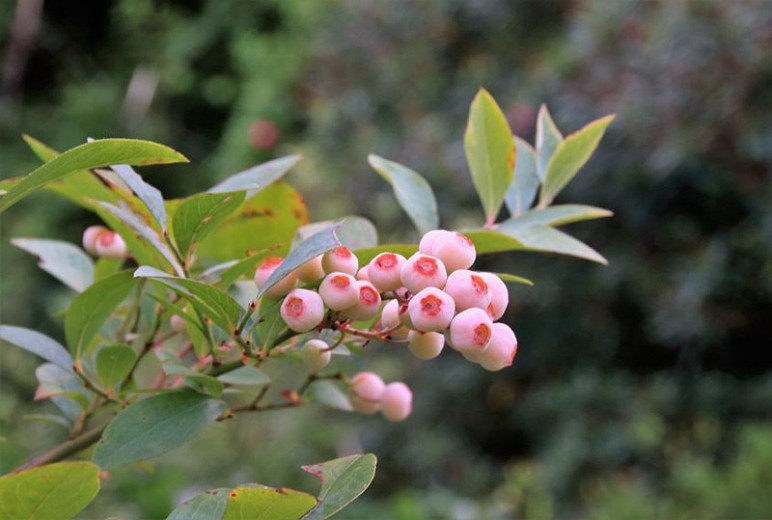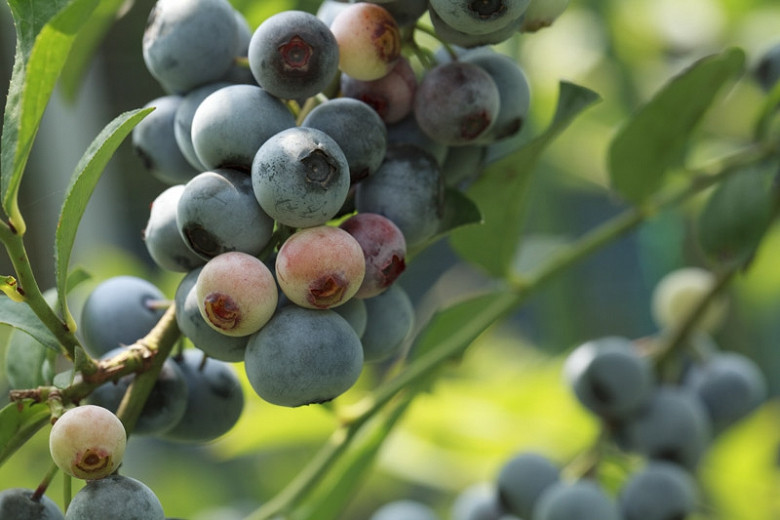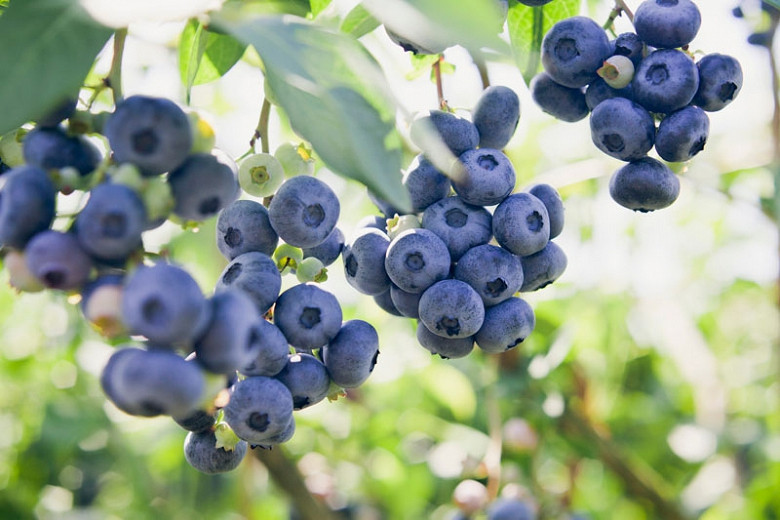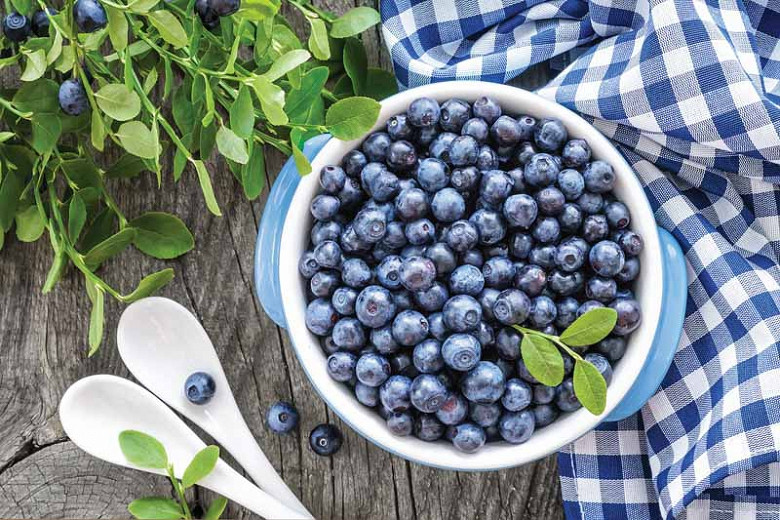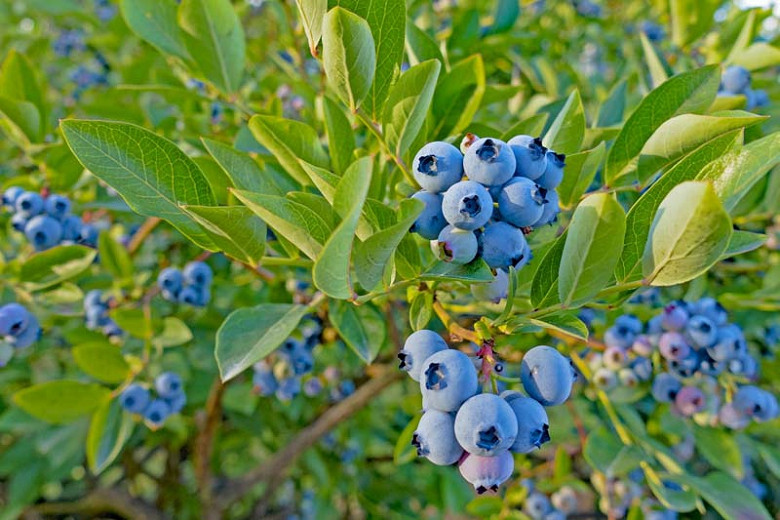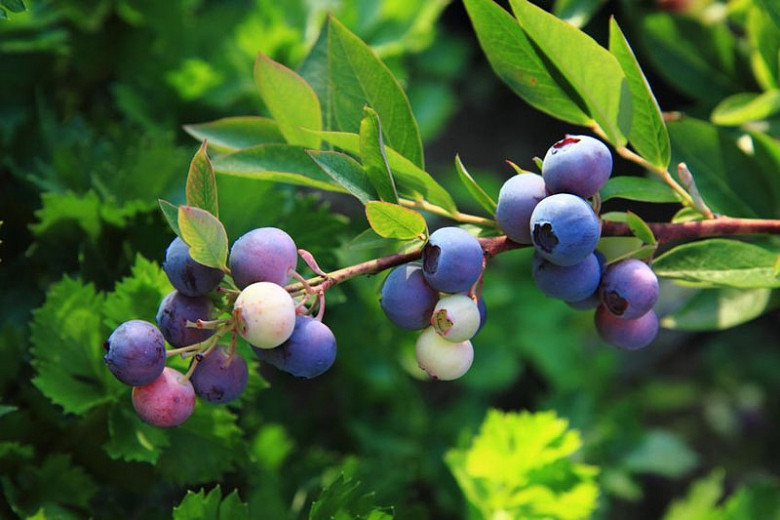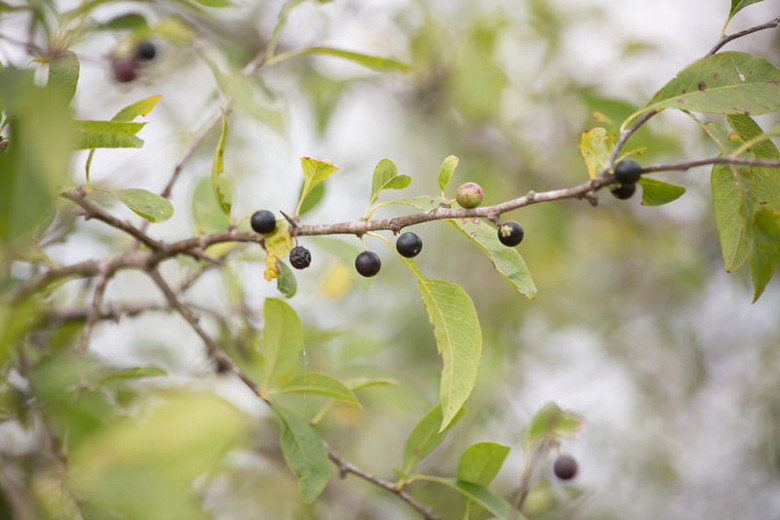Vaccinium ashei (Rabbiteye Blueberry)
Native to the Southeastern US, Vaccinium ashei (Rabbiteye Blueberry) is a bushy deciduous shrub of rather open, spreading habit, with multiple seasons of interest. In mid-spring, attractive clusters of small, urn-shaped, white flowers appear on the naked stems. They are followed by abundant, juicy, and edible, powdery blue berries in early-mid summer – a delight for birds, wildlife, and humans alike! A mature shrub can produce 8-20 pounds of fruit each year, depending on the variety. Its blue-green leaves, 1-2 in. long (2-5 cm), turn spectacular shades of orange and scarlet for up to 4 weeks in fall. Rabbiteye Blueberry is more drought and heat tolerant than lowbush (V. angustifolia) and highbush (V. Corymbosum) blueberries. Plant two or more varieties to ensure cross-pollination and heavy fruit set.
- Grows up to 8-15 ft. tall (240-450 cm).
- A full sun to part shade lover, this plant is best grown in average, medium moisture, well-drained, acidic soils. Mulch plants well to maintain even moisture for the best growth and production. Some drought tolerance.
- Great for shrub borders, foundation plantings, or as an edible hedge. Combines well with Rhododendrons and Azaleas.
- Native to the Southeastern US
Requirements
| Hardiness | 7 – 9 |
|---|---|
| Heat Zones | 2 – 9 |
| Plant Type | Fruit, Shrubs |
| Plant Family | Vaccinium – Blueberries |
| Exposure | Full Sun, Partial Sun |
| Season of Interest | Spring (Early,Mid)Summer (Early,Mid)Fall |
| Height | 8' – 15' (240cm – 4.5m) |
| Water Needs | Average |
| Maintenance | Average |
| Soil Type | Loam, Sand |
| Soil pH | Acid |
| Soil Drainage | Well-Drained |
| Characteristics | Showy, Fruit & Berries |
| Native Plants | United States, Southeast, Alabama, Arkansas, Florida, Georgia, Louisiana, Mississippi, North Carolina, South Carolina, Southwest, Texas |
| Tolerance | Drought |
| Attracts | Birds, Butterflies |
| Garden Uses | Beds and Borders, Hedges and Screens |
| Garden Styles | Informal and Cottage |
